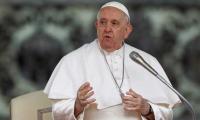Last week, the Supreme Court quietly laid to rest one of the initial suo motus of former CJP Saqib Nisar on all matters involving the Pakistan Kidney and Liver Institute; this issue had continued to reverberate throughout 2018, all the way to the ex-CJP’s retirement. Month after month, the ex-CJP emphasised – while pulling the ear of anyone affiliated with the PKLI – what an unspeakable sin the PKLI’s conception was and what a terrible job its President Dr Saeed Akhtar (in cahoots with CM Shahbaz Sharif) had done. This then would get splattered all over our media during and after the case hearing.
It all started in March 2018 when CJP Nisar was probably contemplating his legacy and all the noble things he’d want himself remembered for. He had taken to inspecting hospitals, seemingly with a burning desire to serve the cause of health (and later education and water too). During a hearing on March 24 (2018), he took suo-motu notice of the disparity in salaries paid to doctors in public hospitals versus those employed by the PKLI. Those were the early days when Court No 1 was evolving a 24/7 work ethic. The weekends in Lahore were about to become suo-motu weekends.
Dr Saeed Akhtar acquired success and recognition in the US where he served as chairman of the Department of Urology at the Texas Tech Health Sciences Center, before relocating to Pakistan to try and give back (as many first-generation expats wish to do upon achieving success abroad). He says that working as director of Transplant Surgery at Shifa International he found out that while you could help some of the poor at a philanthropy-inspired private facility, it was painful to turn away many who needed expensive life-saving treatment like transplants but couldn’t afford it.
The solution, according to Dr Akhtar, was a state-of-the-art facility in the public domain where those with means would pay and those without means would be subsidised by the state. Exceptions such as Shaukat Khanum apart, it’s impossible to fund through donations or private initiatives a transplant hospital that charges patients according to their ability. And public hospitals, with their work ethic, pay structures and lack of professional accountability, can’t engage and retain the talent required to establish and run a multi-disciplinary centre of excellence.
Dr Akhtar thus proposed to anyone who would listen that there was need for a hybrid model: a public-sector facility where funding is provided by the state but without the bureaucratic red-tape and administrative interference so that work ethic, accountability and incentive structures resemble those of the best private-sector facilities. The idea finally resonated with Shahbaz Sharif – in all probability because having been treated in one such multi-disciplinary facility in New York, he understood what Dr Akhtar was proposing. And so the PKLI came into being.
The Punjab Assembly promulgated the Pakistan Kidney and Liver Institute and Research Center Act 2014. Under this law, the PKLI was to be run on a not-for-profit basis by a board headed by the CM, comprising the secretaries of health and finance and 11 members nominated by a private trust. What this meant was that the provincial government would exercise control through budgetary grants and the board dominated by private members would run day-to-day management, with the CM and relevant secretaries providing oversight but without undue interference.
The board focused on the best Pakistani talent from across the globe by offering market-based salaries (in the range of Rs1–1.5 million for trained and experienced doctors) but with a prohibition on private practice. Dr Akhtar managed to convince superstars like Dr Faisal Dar of Shifa (who set up Pakistan’s only Liver Transplant Unit at Shifa, which has performed over 700 transplant surgeries since 2012) to divide his time between Shifa and the PKLI. The credibility of doctors such as Akhtar and Dar attracted many others who were working abroad but whose hearts were in Pakistan.
According to Dr Saeed Akhtar, March 11, 2018 was the fateful day that triggered a year-long torment for the Dr Akhtar and the PKLI. Dr Akhtar says he had met CJP Nisar through a mutual friend, and thought prodding the SC to enforce its edicts against sale of kidneys and livers could help curtail illegal transplants that jeopardise the lives of healthy donors. The ex-CJP probably wanted ideas for his imagined crusade in the health sector. So Dr Akhtar and his wife Dr Masooma Saeed were invited to his house along with Sheikh Amin (CJP Nisar’s class fellow and PKLI board member) and his wife.
Dr Akhtar says that the complexion of an otherwise pleasant meeting took a U-turn when Dr Sajid Nisar, the younger brother of CJP Nisar and a professor working at Services Hospital Lahore (he had just returned from Umrah), stopped by. According to Dr Akhtar soon after arrival, Dr Sajid Nisar launched a harangue about the injustice of squandering millions on foreign-returned PKLI-types when professors in public hospitals were being paid far less. (He didn’t mention anything about the moonlighting income doctors get from private practice while he was dwelling on the pay disparity that perturbed him.)
As Dr Akhtar alleges, the congenial morning turned acrimonious very quickly, after he tried to defend the PKLI model and its rationale and critiqued lack of professionalism in public-sector healthcare as it stands. CJP Nisar got agitated, almost angry he says. While sitting in his house with guests he had invited over, the ex-CJP announced that he would take suo-motu notice of the issue his brother had just drawn his attention to. Dr Akhtar and his wife took that as a cue to leave. But the die had been cast. Within weeks, during a hearing at the Lahore Registry, suo-motu notice of all things PKLI had been taken.
The rest is public knowledge. Dr Saeed and the PKLI suffered the ignominy of a trial (simultaneously in the SC and the media) that projected them as villains. The ex-CJP inspected the PKLI (even publicly asked some doctors how much they were paid). Dr Saeed was placed on the ECL. The PKLI’s statutory board was disbanded and replaced by a handpicked committee. The CM was chided for being part of the PKLI board and the chief secretary for agreeing to high salaries for doctors. A forensic audit was ordered into the PKLI’s finances and the anti-corruption department also felt inspired to delve into the PKLI’s affairs.
But then the CJP was angry with his handpicked committee and the new PTI government in Punjab for failing to showcase the first liver transplant surgery at the PKLI before the end of 2018 as he had desired. Did the CJP not understand the complexity of establishing a safe and functional multi-disciplinary transplant unit? Did he not wonder why Shifa could set one up, but not PIMS or Sheikh Zayed Hospital? Did he really believe that fear of being disgraced in Court No 1 or that of corruption inquiries or contempt of court would miraculously conjure up a state-of-the-art transplant facility?
On February 28 this year, the PKLI matter got fixed before a bench comprising Justices Manzoor Malik, Mansoor Ali Shah and Yahya Afridi. Through a two-and-a-half page order, the court recalled the earlier orders placing Dr Akhtar’s name on ECL, disbanded the SC-nominated committee put in charge of the PKLI while restoring the PKLI board constituted under Sections 6 and 8 of the PKLI Act, and directed that if the anti-corruption department brings any action against anyone, the competent forum will decide the matter without being influenced by any order of the SC.
So just like that an ordeal that began at the ex-CJP’s house over a pre-dinner chat in March 2018 tapered off. But will the reputational harm caused to Dr Akhtar and others in this process be undone? More importantly, can the PKLI’s potential as a multi-disciplinary state-of-the-art transplant facility, offering a ray of hope to those poor and in need of transplants, be rehabilitated? Having seen the fate of Dr Akhtar and others who gave up lucrative private practices to engage with the public sector, only to become objects of scandal, will anyone else take the plunge?
And this is why the scope of Article 184(3) needs to be defined and its exercise structured. The present manner of use of Article 184(3) vests absolute power in the CJP’s office. The Supreme Court is the arbiter of last resort. But if, God-forbid, the chief justice were to turn on you, you are toast: you have nowhere to hide, no remedies to avail, nothing in our constitutional scheme of checks and balances will come to your rescue and – given our culture of sycophancy – no one will speak for you while he is still in office.
Is such absolute power compatible with rule of law?
The writer is a lawyer based in Islamabad.
Email: sattar@post.harvard.edu
Women in politics often find themselves relegated to women's wings, treated as auxiliary units
Connection between gender equality and climate change is particularly evident in food security and water scarcity
In Bangladesh, 73%of children complete lower secondary school, compared to just 51% in Pakistan
As waters downstream of Kotri Barrage have decreased and barely trickle is reaching sea, sea levels have been rising
Recent notification by government of Punjab marks significant departure from earlier efforts
India managed excellent working relationship with Biden administration with economic clout







